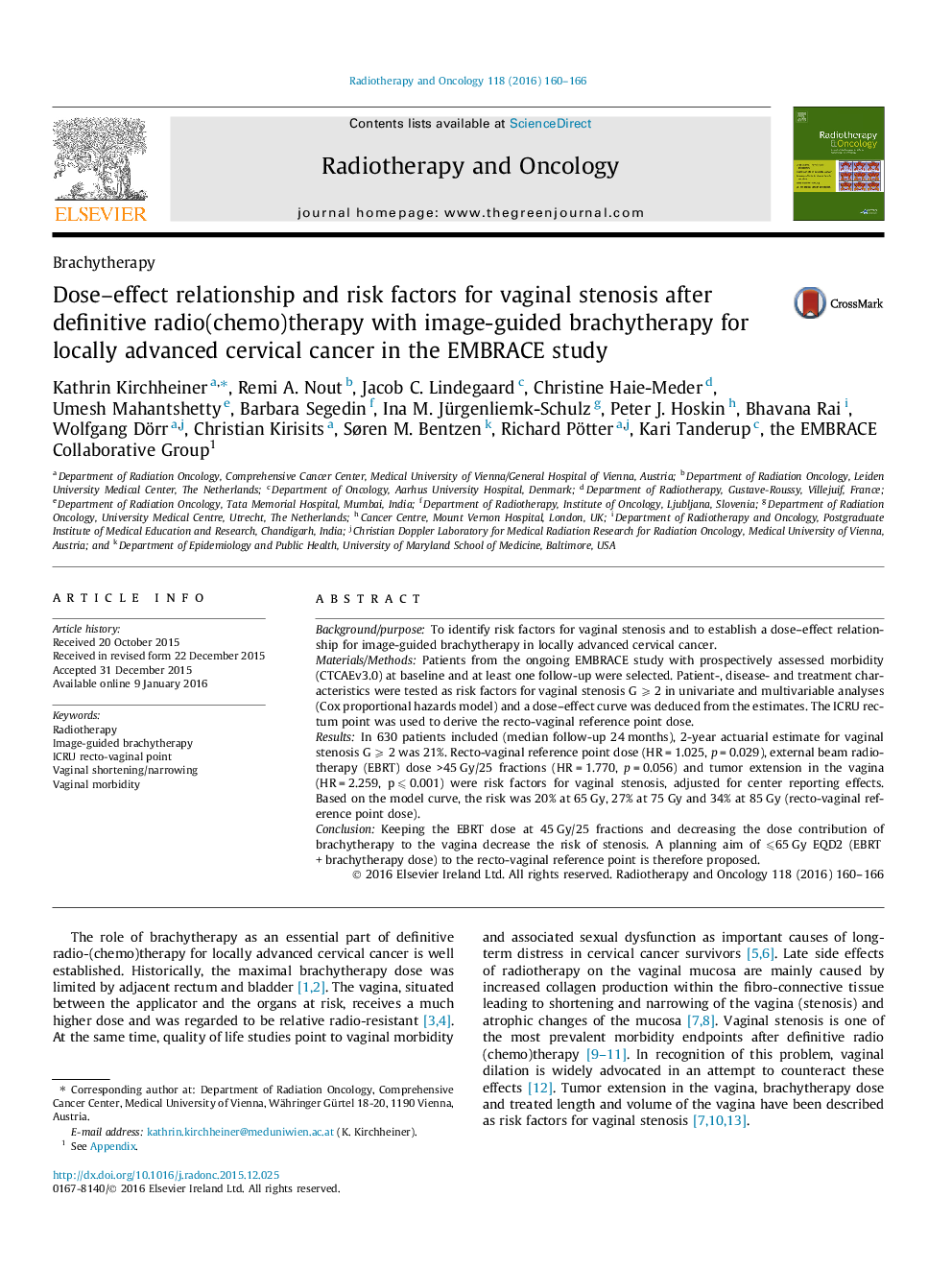| Article ID | Journal | Published Year | Pages | File Type |
|---|---|---|---|---|
| 2157354 | Radiotherapy and Oncology | 2016 | 7 Pages |
Background/purposeTo identify risk factors for vaginal stenosis and to establish a dose–effect relationship for image-guided brachytherapy in locally advanced cervical cancer.Materials/MethodsPatients from the ongoing EMBRACE study with prospectively assessed morbidity (CTCAEv3.0) at baseline and at least one follow-up were selected. Patient-, disease- and treatment characteristics were tested as risk factors for vaginal stenosis G ⩾ 2 in univariate and multivariable analyses (Cox proportional hazards model) and a dose–effect curve was deduced from the estimates. The ICRU rectum point was used to derive the recto-vaginal reference point dose.ResultsIn 630 patients included (median follow-up 24 months), 2-year actuarial estimate for vaginal stenosis G ⩾ 2 was 21%. Recto-vaginal reference point dose (HR = 1.025, p = 0.029), external beam radiotherapy (EBRT) dose >45 Gy/25 fractions (HR = 1.770, p = 0.056) and tumor extension in the vagina (HR = 2.259, p ⩽ 0.001) were risk factors for vaginal stenosis, adjusted for center reporting effects. Based on the model curve, the risk was 20% at 65 Gy, 27% at 75 Gy and 34% at 85 Gy (recto-vaginal reference point dose).ConclusionKeeping the EBRT dose at 45 Gy/25 fractions and decreasing the dose contribution of brachytherapy to the vagina decrease the risk of stenosis. A planning aim of ⩽65 Gy EQD2 (EBRT + brachytherapy dose) to the recto-vaginal reference point is therefore proposed.
